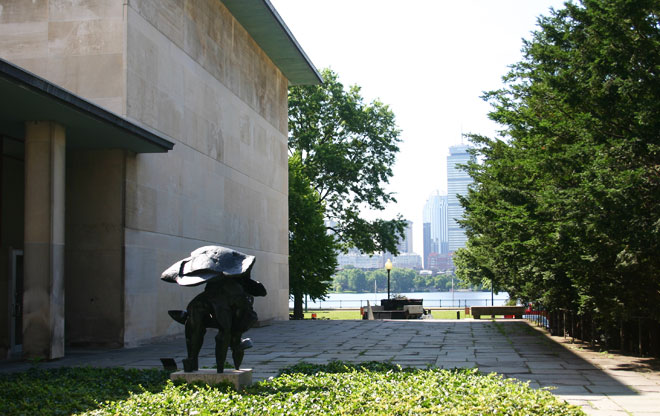
Elmo-MIT
Dimitri Hadzi’s Elmo-MIT (1963) at Hayden Library. The first outdoor sculpture to be commissioned for the collection, Elmo-MIT stands in the West Courtyard of the Hayden Library. Set in a bed of ivy on a raised stone terrace, Elmo-MIT faces south towards the Charles River. This quiet, shady, and relatively hidden terrace, elevated several feet above adjacent Memorial Drive, provides views to the river and Boston.
Image: Laura Tenny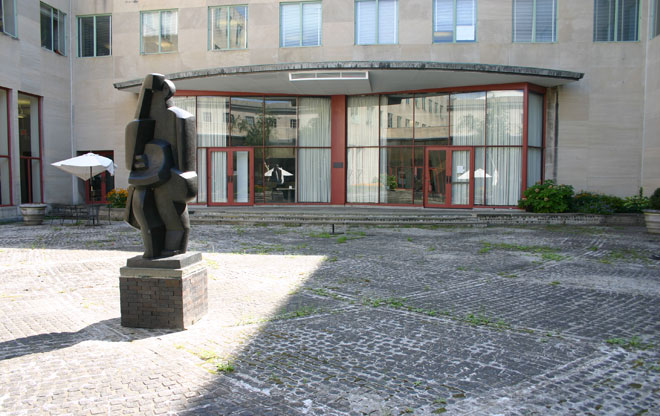
Bather
Jacques Lipchitz’s Bather (1923-25) at Hayden Library Lipchitz Courtyard. Step inside the Hayden Library to find the Bather sculpture, 1923-25, by Jacques Lipchitz. Two other, later Lipchitz bronze sculptures also share this quiet courtyard, making it a worthwhile stop on the campus art tour.
Image: Laura Tenny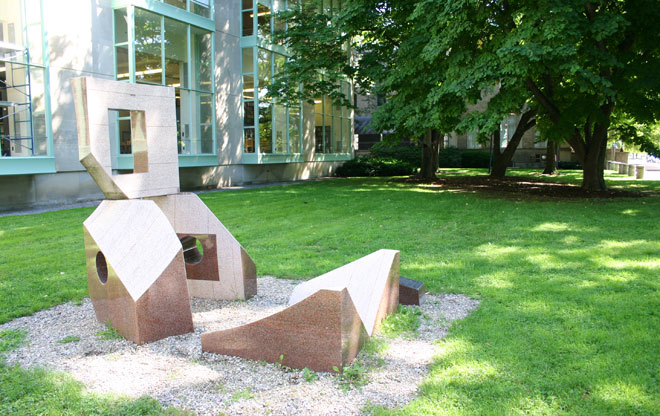
TV Man
David Bakalar’s TV Man or Five-Piece Cube with Strange Hole (1993). More sculptures line Memorial Drive in front of the Hayden Library, which was built in 1948 by architect Ralph Thomas Walker. Here, TV Man lounges on the lawn and playfully echoes the orthogonal architecture.
Image: Laura Tenny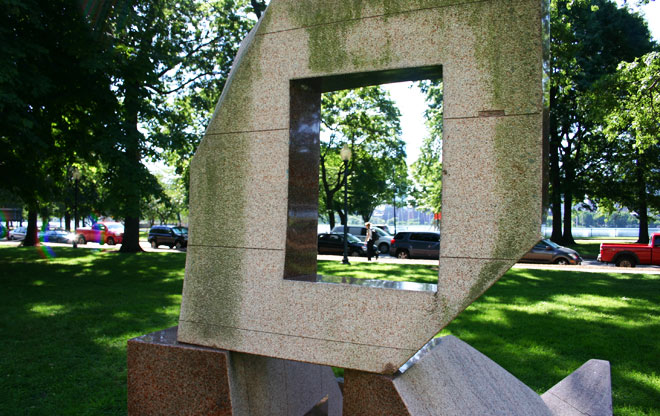
Strange Hole
David Bakalar’s TV Man or Five-Piece Cube with Strange Hole (1993). Stand with your back to Hayden Library and look through TV Man’s “head” to frame views of Memorial Drive and the Charles River.
Image: Laura Tenny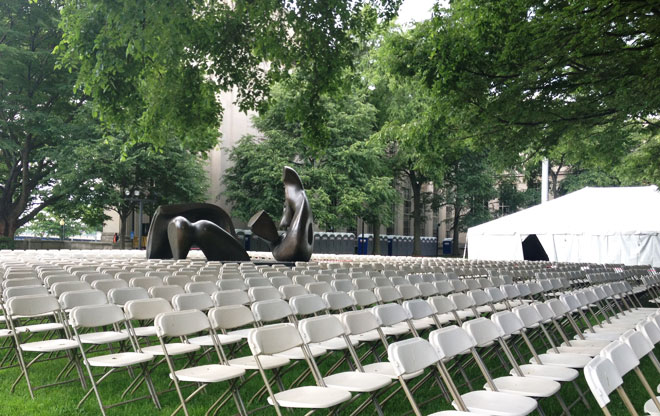
Three-Piece Reclining Figure Draped
Henry Moore’s Three-Piece Reclining Figure Draped (1976) at Killian Court. Another large-scale modern master work of the twentieth century is in Killian Court. Itwas raised on a plinth some years ago, to protect it from skateboard damage, changing the relation of the sculpture to the landscape. In the days before Commencement, the sculpture seems to float above the chairs. Every June, Killian Court hosts 13,000 people for annual Commencement exercises.
Image: Laura Tenny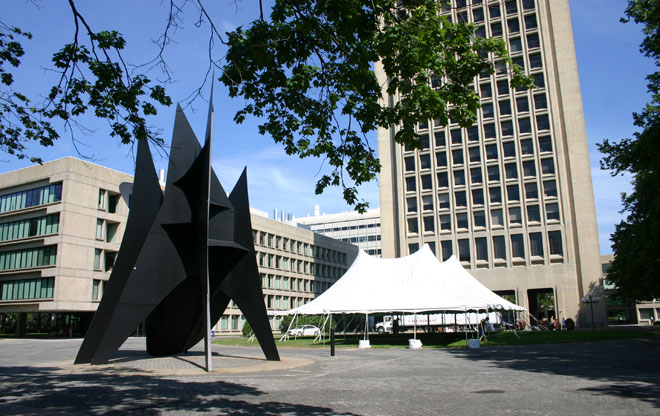
La Grande Voile
Alexander Calder’s La Grande Voile (The Big Sail) (1965) at McDermott Court. This monumental “stabile" sculpture located in McDermott Court is one of the grandest art pieces in MIT’s landscape. It stands next to a circle of lawn known affectionately as “The Dot,” and its massive scale defies its visual lightness as the sculpture seems to stretch toward the sky. Nearby, one of the tallest buildings on campus, I.M. Pei’s Green Building (Building 54), provides a soaring backdrop.
Image: Laura Tenny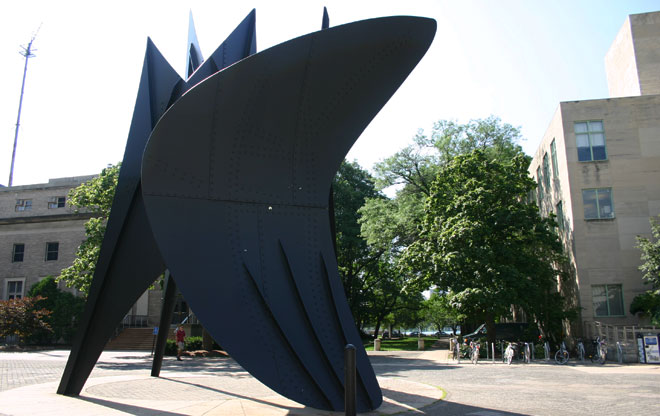
View to the River
Looking south through the “legs” of the sculpture you get a nice filtered view of the Charles River through an allee of London Plane trees. The McDermott Courtyard, designed in the 1960s by Sasaki Associates, though a bit timeworn still shows the bones of its elegant modern design present in the circle of lawn, organized planting of plane trees, and this handsome sculpture.
Image: Laura Tenny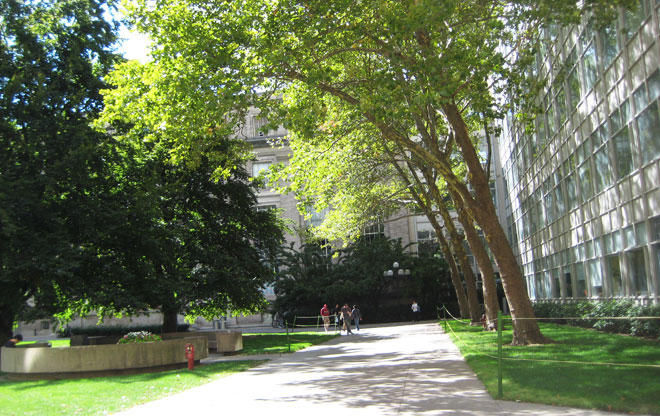
Modernist Courtyard
Continue walking from McDermott Court to the adjacent Eastman Court, past I.M. Pei’s Dreyfus Building (Building 18), to enjoy another modernist courtyard shade by large London plane trees.
Image: Laura Tenny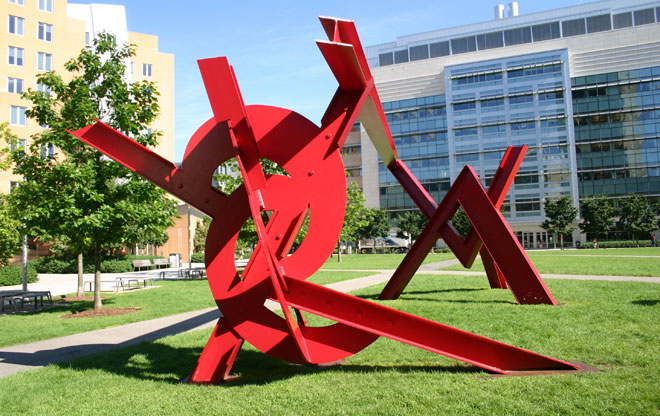
Aesop's Fables II
Mark di Suvero’s Aesop’s Fables II (2005). One of the most eye-catching sites along the tour is Aesop’s Fables II in MIT’s North Court, with architect Frank Gehry’s Ray and Maria Stata Center as a backdrop. The sculpture, with its big scale and brilliantly-painted steel I-beams, easily holds its own against its eclectic surroundings. See more about Reed Hilderbrand Associates’ design for North Court in a related MIT tour.
Image: Laura Tenny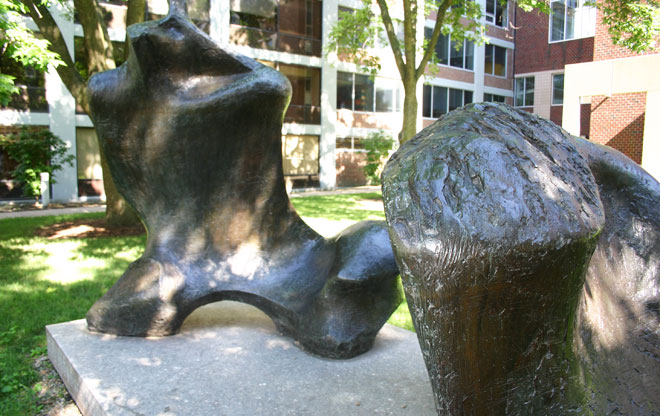
Reclining Figure
Henry Moore’s Reclining Figure (1963). Head over to MIT’s East Campus to see several more great works of sculpture. Here is Moore’s Reclining Figure resting in a beech tree-planted courtyard across from two of MIT’s notable buildings: the List Visual Arts Center (Building E15, architect I.M. Pei, 1985) and Media Lab (E14, Fumihiko Maki, 2010). The organic and tactile nature of this piece is a nice contrast to the surrounding architecture.
Image: Laura Tenny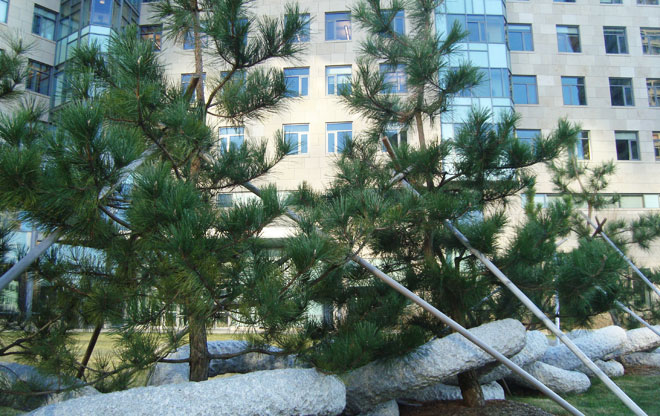
Ring Stone
Cai Guo-Qiang’s Ring Stone (2010). Sited prominently on the front oval of lawn at Building E62, MIT’s Sloan School of Business, is the granite Ring Stone sculpture, some 40 feet long. All the rings were carved from one monumental piece of stone and seven Japanese Black Pine trees have been planted inside the rings. The oval entry court and surrounding gardens at E62 host several works on the public art tour and were all designed by Halvorson Design Partnership.
Image: Laura Tenny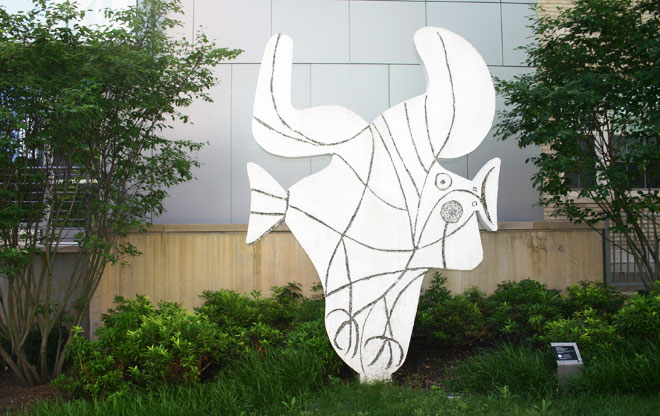
Figure Decoupee
Pablo Picasso’s Figure Decoupee (1958). This charming fish- or bird-like figure is hidden from view of the street. It presides over a small garden planted with Japanese lilacs, located between Buildings E62 and E60. Nearby is a rain garden basin that captures storm water runoff.
Image: Laura Tenny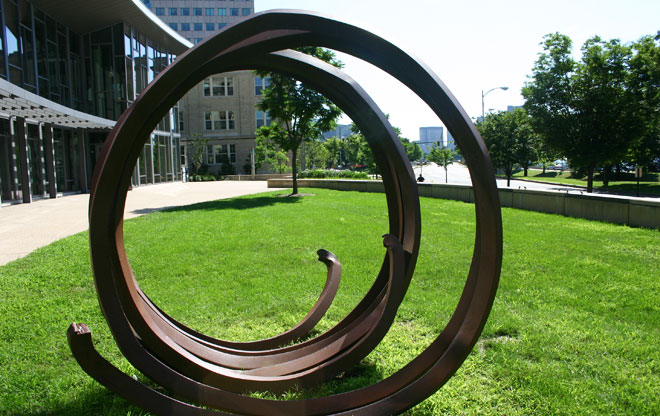
Two Indeterminate Lines
Bernard Venet’s Two Indeterminate Lines (1993). On Memorial Drive at the Gruber Family Courtyard, is where this rolled steel sculpture is found. All of the landscapes surrounding the new Sloan School building (E62) were designed by Halvorson Design Partnership and are some of the most lushly-planted landscapes at MIT.
Image: Laura Tenny